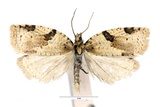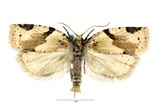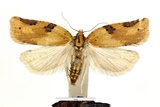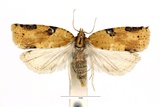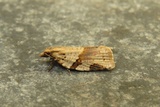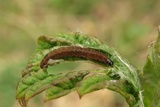Clepsis spectrana (Treitschke, 1830) Species
Last modified: Nov. 8, 2023, 11:59 a.m.
A rather common species throughout Belgium.
Details
- Classification
- Family: Tortricidae > Subfamily: Tortricinae > Tribus: Archipini > Genus: Clepsis > Species: Clepsis spectrana
- Vernacular names
- Koolbladroller (NL), Cyclamen Tortrix (EN), Geflammter Rebenwickler (DE)
- Synonyms
- Clepsis gnomana sensu (Hübner, 1799) , Clepsis latiorana (Stainton, 1857) and Clepsis costana sensu auct.
- First mention in Belgium
- De Sélys-Longchamps E. 1844. Énumération des insectes Lépidoptères de la Belgique. — Mémoires de la Société royale des Sciences de Liége 2: 1–35. On page 20.
- Status
-
Native
Distribution
Flight periods
The adults fly in two overlapping generations from the end of April till July, and again from end July till late September.
Observed on
- Substrates:
- Polyphagous
The very polyphageous larva lives on a variety of plants, mainly in wet habitats Epilobium, Filipendula, Potentilla, Limonium vulgare and Artemisia maritima, but it has been recorded also from Quercus, Acer pseudoplatanus, Petasites hybridus, Rubus idaeus and even Picea.
Larvae can be found feeding within the flowering stems of Petasites hybridus. This causes wilting at the top, which is very similar to the feeding signs of Hydraecia petasitis.
No pictures yet!
